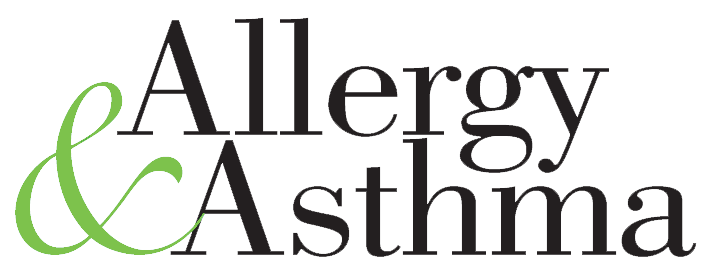Published Jun 13, 2022 in forbes.com
Author by Robert Pearl
Since this time last year, the U.S. Food and Drug Administration (FDA) has granted approvals for 42 new medications. The press releases for these drugs would lead a reasonable person to conclude that a pharmaceutical revolution is underway—that the drug industry is ushering in a brave new era of medical advances.
The truth is far less flattering. Despite enormous hype and dozens of new medications flooding the market each year, major pharmaceutical breakthroughs are exceedingly rare. The overwhelming majority of “blockbuster” drugs represent minimal (if any) improvement over existing treatments.
This is not because drug companies lack the scientific knowhow, research capabilities or dollars to deliver lifesaving medications.
Instead, drug-industry innovation has been stifled by an unwritten rule in healthcare; one that has guided nearly all pharmacological research and development (R&D) efforts of the 21st century.
The rule: Maximize drug profits by minimizing the risk of failure
In the previous century, before the term “wonder drug” was hyperbolically applied to every new FDA-approved medication on the market, drug companies almost always swung for the fences.
Consider the countless lives improved and saved by the true wonder drugs of the 20th-century.
Like insulin, discovered in 1921 to treat diabetes. Or penicillin, the infection-fighting antibiotic derived from mold in 1928. Or mechlorethamine, a 1940s weapon of chemical warfare turned cancer-fighting agent now used in chemotherapy drugs. Or the life-saving psychiatric medication chlorpromazine, now known as Thorazine, created in 1951. Or birth control (approved by the FDA in 1960), or statins that reduce heart-disease (like Lipitor, patented in 1985) or the HIV/AIDS treatment zidovudine (better known as AZT, 1987).
MORE FOR YOUCDC: Salmonella Outbreak Has Left 279 Ill, 26 Hospitalized In 29 StatesCanadians End Up In ICU After Attending ‘Covid Party’White House Mandates Pfizer Vaccines for Millions of Citizens …Before the FDA Clinical or Safety Reviews Have Been Made Public
For each of these medications, the research and development (R&D) process was intense and time-consuming. The go-to-market costs were massive with the potential to bankrupt the underwriting drug companies involved.
But despite the expenses and risks, pharmaceutical leaders were driven then by an intrinsic desire to save lives. As George Merck put it in 1950 near the end of his 25-year run as Merck CEO: “We try never to forget that medicine is for the people. It is not for the profits. The profits follow.”
In the 1980s, that outlook shifted. Newly elected president Ronald Reagan pulled back government regulations, which sent the stock market soaring. Pharmaceutical shares skyrocketed more than 950% over the next 12 years.
By the 1990s, outsized CEO salaries and exorbitant drug prices had become the norm. The focus of the industry swung from saving lives to increasing shareholder value. Drug companies wanted to maximize prices while minimizing drug-development risks. They succeeded, and drug spending in the United States took off.
To spotlight the difference, consider that from 1960 to 1980 prescription drug sales remained fairly static as a percent of U.S. gross domestic product, consuming just 5% of all medical costs. Between 1980 and 2000, however, sales tripled. Today, prescription drug expenditures exceed $460 billion a year, accounting for 16.7% of all healthcare dollars spent.
The smoke and mirrors of drug pricing
Pharma leaders love to trumpet how expensive and time-consuming it is to bring a new drug to market. They collectively assert that ever-rising prices are needed to “cover accelerated investment in researching and developing new and better medications to protect Americans.”
That message has found a receptive audience among patients. Today, 68% of Americans believe that the cost of R&D is “a major contributing factor” to high drug prices.
The data tell a different story about where the money goes. One report found that 9 of 10 top drugmakers spend billions more on marketing than R&D. Another investigation noted that 80 cents of every $1 in prescription drug sales go to something other than R&D—be it profit, overhead, taxes, etc.
To be clear: Drug companies are not struggling to make ends meet or afford the cost of R&D. In fact, a 2019 analysis found that drugmakers could afford to lose $1 trillion in sales and still be the nation’s most profitable industry sector.
Maximizing revenue by minimizing risk
Two recent FDA approvals—Aduhelm, the first new Alzheimer’s medication in over two decades, and Trodelvy, a targeted treatment for aggressive breast cancer—demonstrate that drugmakers aren’t living up to their potential, despite the high prices and industry hype.
The companies behind Aduhelm and Trodelvy have issued a combined total of 70 press releases (34 from Biogen and 36 from Gilead) about their respective flagship drugs.
Notwithstanding the sheer quantity of promotion, neither drug will have a meaningfully positive impact on the lives of people with Alzheimer’s or breast cancer.
Look at Aduhelm. Two years before its approval, Biogen halted testing amid inconclusive and concerning results. In trials, the drug wasn’t shown to preserve intellectual function for patients. But rather than abandoning the medication or pausing to invest in additional R&D, the company filed for accelerated approval, which the FDA granted against the cautions and protests of its scientific advisory committee.
Upon approval, Aduhelm was projected to earn upward of $112 billion in annual sales with an initial price tag of $56,000 (five times greater than its estimated value)—a maximal profit projection for a drug with minimal value. This controversial drug and its accelerated pathway to approval have congress taking a closer look at the FDA. And for good reason. Since 1992, nearly half (112) of the 253 drugs given speedy approval have not been proven to extend longevity or improve quality of life.
And then there’s Trodelvy, a key drug in Gilead’s oncology portfolio. It was invented by Immunomedics, Inc., which Gilead purchased for $21 billion (one of more than 30 cancer drugs Gilead has acquired in the past five years).
Priced at over $2,200 per vial, a 21-day cycle of the new breast-cancer treatment costs $16,000 and contributed to an 11% revenue increase for Gilead in 2021 (leading to a $19 million bonus for the company’s CEO).
So, is Trodelvy worth the price? A company press release boasts a 49% reduction in the risk of death for patients who take the drug.
That figure is misleading at best. In studies, the medication extended median overall survival to 11.8 months compared to 6.9 months in the control group. The “statistically significant survival benefit” noted in the press release makes it sound as if patients taking the drug beat their cancer. In reality, they died less than five months later than patients who took standard chemotherapy.
When we zoom out and look at the 90-some new oncology drugs approved by the FDA this century, the average gain in life expectancy is a mere 73 days. Much of that time is spent in pain, dealing with debilitating side effects while being isolated from loved ones.
By following the rule of maximizing profits at minimal risk, pharmaceutical companies now routinely price and promote minimally effective drugs as if they were lifesaving medications.
Even the highly effective Covid-19 vaccines—the most celebrated innovation of the 21st century—were brought to market with minimal risk. The federal government paid for much of the underlying development costs through decades of NIH-funded research and minimized the risks to companies by fronting $18 billion as part of “Operation Warp Speed.”
Breaking the drug-industry’s unwritten rule
For drug companies, the lure of charging high prices ($2.1 million in one case) and generating huge profits (more than any other industry sector) distorts research priorities. As a result, pharmaceutical companies ignore many of the biggest areas of clinical need.
Consider antibiotics, a drug category that remains extremely under-researched and underfunded. Public health officials agree that antibiotic resistance undermines our entire modern medical system. Nationwide, drug-resistant bugs are becoming a growing threat, putting millions of lives at risk. That is, unless drug companies can discover the next generation of treatments.
But there’s a problem: Antibiotics are usually prescribed for a short 10- to 14-day course, generating only a tiny profit. Thus, identifying a new class of antibiotics is (financially) risky and nowhere as profitable as the drugs currently garnering the most interest—like cancer drugs, which can be priced at $120,000 to $150,000 a year regardless of efficacy.
Right now, more than 600 cancer drugs are being tested for clinical use. Meanwhile, there are no breakthrough antibiotics on the horizon.
For the past two decades, life expectancy in the United States has stalled. Our nation needs better, safer, more effective medications. But drug companies won’t develop them until the industry inverts its focus: not on minimizing risk but on maximizing its impact on human lives.
Americans won’t be able to afford those drugs until another rule of the drug industry is broken: the rule governing how drug companies price their newest medications. That will be the focal point of the next article in the Breaking The Rules Of Healthcare series.




